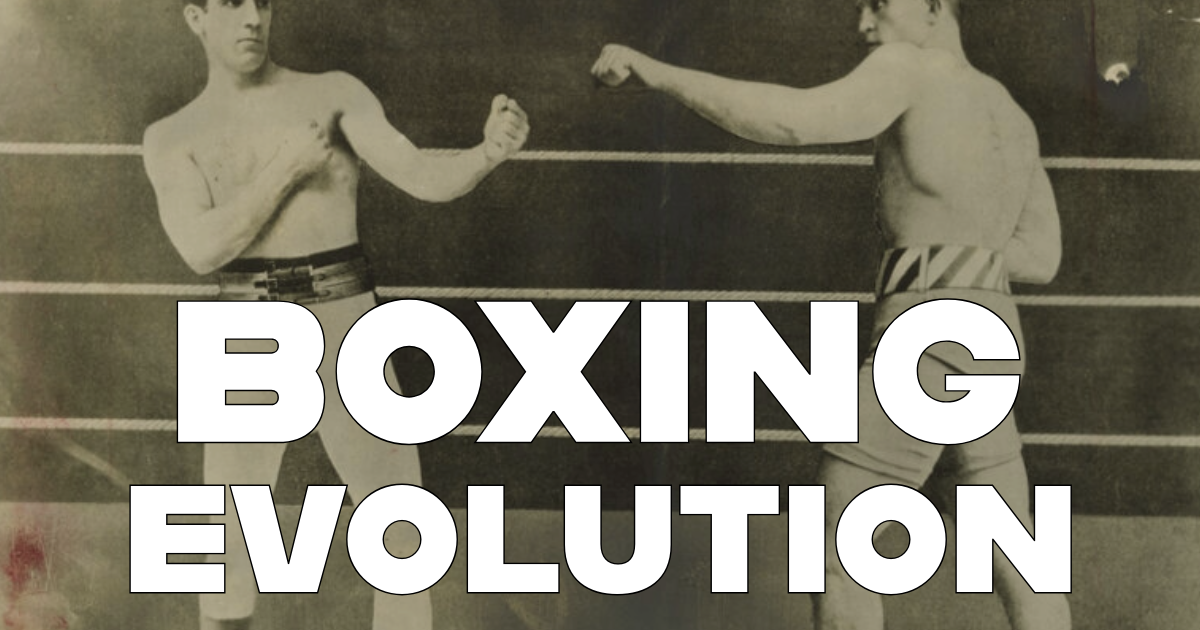Boxing Through the Ages: How the Sport Has Evolved
Boxing, often called "the sweet science," has evolved significantly over the centuries, from an ancient and somewhat brutal pastime to a highly regulated professional sport. This evolution reflects changes in societal norms, advances in technology, and a deepening understanding of human physiology and sports science. In this article, we explore the fascinating history of boxing, the technological advancements in equipment—especially punching bags—and highlight the motor coordination as the pinnacle of modern boxing training.
Ancient Beginnings and Bare-Knuckle Era
Boxing’s origins can be traced back to ancient civilizations. The earliest evidence comes from Sumer in the 3rd millennium BCE, and it was popularized as a formal sport by the Ancient Greeks in 688 BCE, becoming a staple of the Olympic Games. Originally, fighters wrapped their hands in soft leather thongs to protect their knuckles, fighting until one man was knocked out or admitted defeat—there were no rounds, and no weight classes.
This form of boxing, known as bare-knuckle boxing, carried into the 16th and 17th centuries in England. It was a brutal spectacle, and fighters often sustained severe injuries. The introduction of the Queensberry Rules in 1867 helped to morph boxing into a more civilized sport. These rules introduced gloves, rounds, and weight classes, along with the banning of wrestling moves.
Technological Advancements in Boxing Equipment
As boxing has evolved, so has the technology behind the equipment used in training, especially punching bags which have seen extensive refinements over the years. Each type of bag—from heavy bags to speed bags to coordination bags—serves a distinct purpose in a fighter's training regimen, helping refine different aspects of their technique and physical fitness.
Heavy Bags
Origin and Evolution: The heavy bag, traditionally filled with sand, grain, or sometimes even old clothes, has been a staple in boxing training due to its resistance and ability to simulate an opponent's resistance. Historically, these bags helped fighters practice their punches without the risk of injuring a sparring partner. Over time, heavy bags have evolved from simple leather sacks to sophisticated, durable bags covered in tough materials like vinyl or leather, filled with fibers that better absorb impact and mimic the human body's resistance.
Modern-Day Usage: Today’s heavy bags are not only tougher but are also designed to be more anatomically accurate, often shaped to represent the human torso. This design allows boxers to practice body shots and uppercuts more effectively, making their training sessions as realistic as possible.
Speed Bags
Origin and Evolution: Speed bags were introduced in the late 19th century as a tool to improve boxers' rhythm and speed. The earliest speed bags hung from the ceiling and rebounded at high speeds when struck, which was revolutionary at the time. Initially, they were simple leather balls, but as their importance was realized, they evolved into teardrop-shaped bags made from tougher materials that could withstand more rigorous workouts.
Modern-Day Usage: Modern speed bags are adjustable in height to suit different trainers and are made with lightweight leather or synthetic materials that offer quick rebounds and polished wooden or synthetic platforms to enhance stability and response time. These bags are crucial for developing a boxer’s reflexes and rhythm.
Double-End Bags

Origin and Evolution: Double-end bags, resembling a small, connected ball suspended between two elastic cords, are designed to be hit over-and-over in the same spot, were developed to help fighters work on their striking accuracy. Though originally more rudimentary, modern double-end bags are highly refined to provide reactive and multi-directional movement, enhancing a fighter's agility and precision.
Modern-Day Usage: These bags are now made with high-grade synthetic materials that can endure the wear and tear of daily gym life and are adjustable in tension and height to simulate different fighting scenarios. They are essential for fighters looking to enhance their punching accuracy and rhythm.
Coordination Punching Bag
The Coordination Punching Bag is the culmination of years of technological advancements in boxing equipment. It’s dynamic motion technology helps fighters refine their technique with precision. The bag’s unpredictable movement gives the feel of an actual opponent, a feature that adds an element of realism to the training session.
Modern-Day Usage: What sets the Jukestir apart is its ability to move unpredictably which helps fighters develop their footwork and fight IQ. The bag’s movement patterns can be adjusted to enhance a boxer's footwork and coordination, crucial for dodging and landing punches effectively in the ring.
This high-tech bag not only improves physical attributes such as power and speed but also enhances tactical skills, making it a revolutionary tool in the sport of boxing.
Each of these bags plays a pivotal role in a boxer's training, offering different benefits and simulating various aspects of a real fight. The evolution of these bags from simple, rudimentary tools to complex, technologically advanced equipment mirrors the overall progression of boxing as a sport—from a rough, unregulated contest to a sophisticated, highly technical discipline.
Skepticism and Rejection Among Some Boxers
Traditional Training Methods: Some boxers, particularly those trained in more traditional or "old school" methods, initially resisted using the speed bag, double-end bag, and coordination bag. These boxers often favored heavy bags and speed bags because they were perceived as sufficient for developing the necessary skills of power and speed. The double-end bag, with its erratic movements, was seen as less beneficial for developing the raw power that many fighters prioritized.
Perceived Practicality and Efficacy: Another reason for resistance was the perceived lack of practicality. The speed bag, double-end bag, and coordination bag require a fine-tuned sense of timing and sharp accuracy, which some boxers did not immediately appreciate. Unlike the straightforward feedback of landing punches on a heavy bag (which clearly mimics the impact on an opponent), the speed bag, double-end bag, and coordination bag movements can be frustrating without a high level of skill and patience, leading some to doubt its efficacy.
Adaptation to Movement and Timing: Boxers who relied heavily on brute force found the speed bag, double-end bag, and coordination bag double-end bag particularly challenging because it necessitated a style of fighting that emphasizes rhythm and fluidity over sheer power. This bag improves reflexes and the ability to hit moving targets effectively, which are crucial for scoring points in matches and avoiding return blows, aspects not all fighters valued equally.
Gradual Acceptance and Modern Usage
Realization of Benefits: Over time, as the sport of boxing evolved to favor not just power but also speed, precision, and tactical acumen, the benefits of the speed bag, double-end bag, and coordination bag became more apparent. Coaches and trainers incorporated it into routines to develop their fighters’ ability to anticipate and react to quick movements, which are critical during actual fights.
Conclusion: The Pinnacle of Punching Bag Technology
As boxing continues to evolve, so does the equipment that prepares fighters for the ring. The Coordination Punching Bag is more than just a training tool; it is a comprehensive system that enhances every aspect of a boxer’s craft, from physical power and endurance to mental acuity and tactical planning. It stands as a testament to the long history of boxing technology, from rudimentary leather sacks to a sophisticated, interactive training device that brings the ancient art of boxing into the modern age.
In embracing such advanced equipment, boxers can significantly improve their skills, ensuring the sport of boxing remains dynamic and ever-evolving. The Jukestir Coordination Punching Bag isn't just a step forward in technology—it's a leap towards the future of boxing.



Leave a comment
This site is protected by reCAPTCHA and the Google Privacy Policy and Terms of Service apply.